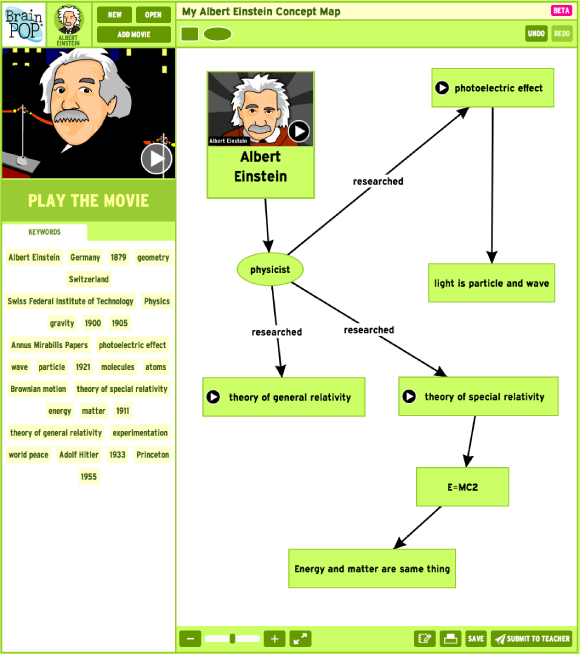An important question you can ask as you start your year pertains to the accessibility of certain education-based services that you may not have thought of as relevant to language instruction, but definitely are useful! Many school districts or schools invest in such subscriptions to bolster the resources of the schools, and you may have overlooked that email reminding you of their availability. I am speaking specifically of resources such as BrainPOP, Reading A-Z and ExploreLearning. So ask your librarian or IT Specialist!
I have long discussed BrainPOP as a useful tool for SLPs and language teachers. BrainPOP (gr 3+) and BrainPOP Jr. (K-3) are catalogs of short curriculum-based animated videos, featuring Tim or younger Annie along with their robot companion, Moby. Both resources are accessible on the web (at BrainPOP and BrainPOP Jr.) and through free iPad apps: BrainPOP Featured Movie and BrainPOP Jr. Movie of the Week. Limited free content is available on the apps and website (which also features terrific links between movies and educational standards, as well as educational interactive games, many of them fodder for language activities). If you have a laptop available, the website has also added this terrific make-a-map activity allowing you to easily construct a semantic map to show the connections between the language and concepts in the specific film. Your experience will be vastly improved if you have a subscription as you will be able to use more films to "sync" with the classroom curriculum or review topics you know your students have been covering in class.
 |
| Image via brainpop.com |
What exactly does BrainPOP have to do with language instruction? Thought leaders in our field such as Barbara Ehren encourage us to use curriculum touchpoints (no, not all the time, not necessarily at the same time as the classroom, and not as tutors or curriculum specialists) as a context for working on students' language goals. BrainPOP makes it easier to set that context, while engaging the student. You could follow up a BrainPOP movie with:
-creating sentences from a wordsplash you create as the movie is playing
-using graphic organizers that emphasize expository text structures
-vocabulary work with tools such as the Expanding Expression Tool
-making a collage with PicCollage emphasizing sentence formulation, abstract categories, and description of the topic.
-among many others...
 |
| BrainPop has an eye toward expository language, often presenting elements of the topic as visual lists, sequences, or cause-effect relationships. |

No comments:
Post a Comment